Micca MPLAY-HD WLAN 1080p Digital Media Player
The MPLAY-HD WLAN is a powerful yet affordable digital media player designed to easily play videos, music or photos anywhere in the home. With its fast LAN connectivity and built-in 802.11n WLAN wireless capability, the MPLAY-HD WLAN can stream media content from sources on your home network or receive media pushes form compatible smartphones and tablets. Whether playing heart warming home videos in the comfort of a living room or delivering a heart pounding blockbuster movie experience in a home theater, the MPLAY-HD WLAN is an exceptionally versatile choice for all media playback needs.
Powerful
The MPLAY-HD WLAN incorporates the powerful Realtek RTD1185PA processor with fast DDR3 memory for stunning video quality and fluid playback at up to 1080p full HD resolution. It easily handles demanding formats such as full BD ISO files, including playback of all popular video formats over HDMI. The MPLAY-HD WLAN’s built-in LAN smoothly streams any supported media format, while its 802.11n WLAN enables convenient wireless media streaming.
Convenience
Harnessing the convenience of modern portable devices, the MPLAY-HD WLAN works as a DLNA media renderer device to receive media pushes from smartphone and tablets running DLNA software. The player’s cast screen function allows the screen and audio output of a compatible smartphone or tablet device to be mirrored to the player for display on a TV.
A Universal Media Player
The MPLAY-HD WLAN provides flawless playback for all of today’s popular media file formats up to 1080p – no more guessing whether a video you just got is supported!
- Video Files – MKV, AVI, MOV, MP4, MPG, VOB, DVD/BD-ISO, M2TS, TS, DAT
- Video Codecs – H.264/AVC, MPEG1/2/4, VC-1
- Audio Formats – MP3, OGG, WAV, FLAC, APE
- Image Formats – JPG, GIF, BMP, PNG, TIF
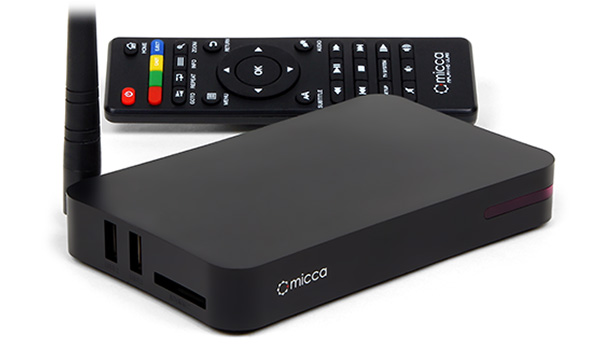
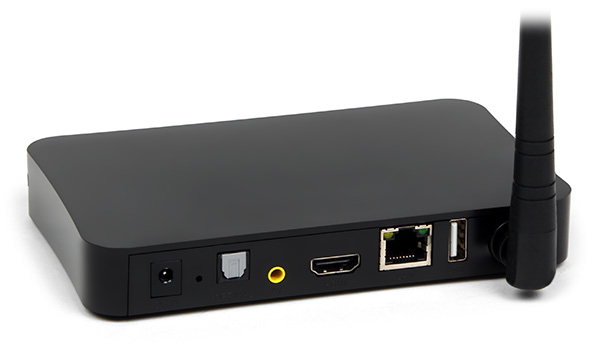
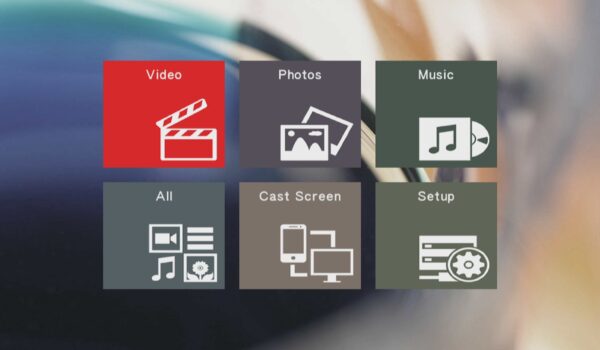
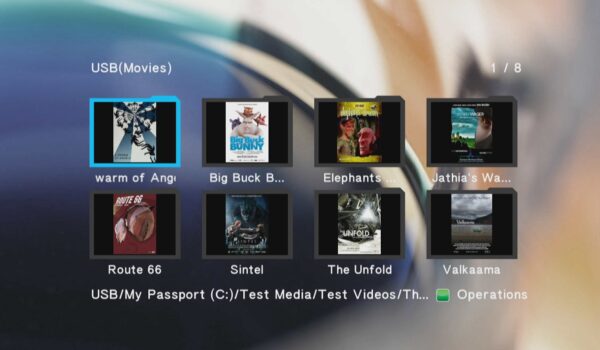
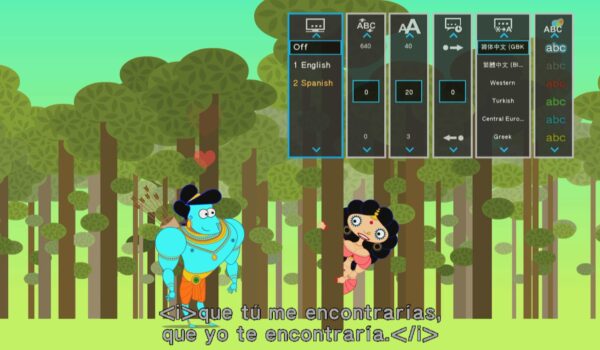
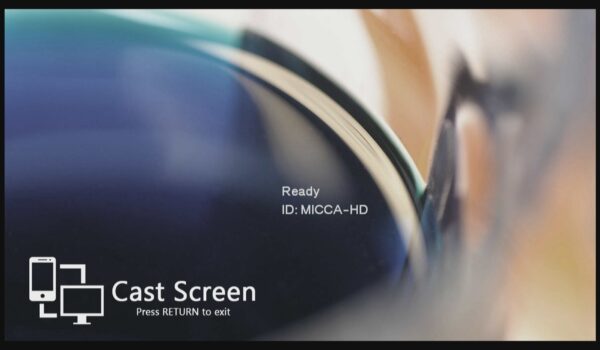
Feature Highlights:
- Universal media player, powerful enough to handle high bitrate 1080p Full-HD videos!
- Supports all popular video and audio formats
- Ultra fast LAN and 802.11n WLAN networking capabilities
- Play media files from USB drives, SD/SDHC cards, and network sources
- Cast screen feature allows audio/video mirroring from compatible smartphones and tablets
- Convenient resume from last stop point and continuous multi-file playback
- Ultra low-power consumption of only 10 Watts
Hardware
- Realtek RTD1185PA 500MHz Decoder/Processor
- 256MB DDR3 Memory
- 128MB NAND Flash
AV Output
- Video Connection: HDMI 1.3, CVBS/Composite
- Output Resolution: NTSC, PAL, 480p, 720p, 1080i, 1080p
- Audio Connection: SPDIF optical, analog stereo
Storage Supported
- 3 x USB 2.0 Host Port
- SD/SDHC Flash Memory Card Reader
- USB Drive Support: 128MB to 2TB
- Flash Memory Card Support: 128MB to 32GB
- File System Support: FAT/FAT32, NTFS, HFS+, and EXT3 file system up to 2TB
Network
- 10/100 Mbps Fast Ethernet LAN
- Built-in 802.11n WLAN (RTL8192CU 2T2R)
Media Format Support
|   | Files | Codecs/Format | Notes |
| Video | AVI | H.264/AVC, VC-1, MPEG1/4, M-JPEG | 1920x1080p 30fps Max
640×480 30fps for M-JPEG |
| MP4, MOV | H.264/AVC, MPEG4 | ||
| MKV | H.264/AVC, MPEG1/2/4 | ||
| BD ISO, TS, M2TS | H.264/AVC, VC-1, MPEG1/2 | ||
| VOB, DVD ISO, DAT, MPG | MPEG1/2 | ||
| Audio | Audio Files | MP3, OGG, WAV, FLAC, APE | |
| Photo | JPG, GIF, BMP, PNG, TIF | 8000 x 8000 Max |
What’s Included:
- Micca MPLAY-HD WLAN Digital Media Player
- IR Remote Control
- RCA AV Cable
- 110-240V AC Adapter
User’s Manual:
Micca MPLAY-HD User’s Manual (opens in a new tab/window)
Firmware:
Micca MPLAY-HD WLAN Firmware 2014-11-09
Installation Instructions:
- Please click on this link for detailed instructions for installing firmware updates.
Relase Notes:
- Initial Release
Micca MPLAY-HD WLAN
Mac Computer Owners – Photo and Video Playback Issues
Mac computers are great but Mac owners often report odd behaviors when they share a SD card or USB drive between a Mac and non-Mac devices, including Micca digital photo frames and media players. The issue is most likely caused by the following:
If you are using a Mac to copy photos or videos to a SD card or USB drive, it will create a small thumbnail in the same folder as each image/video, preceded by a “._” in the file name. These extra files cause problems on non-Apple devices. There are utilities like this one:
http://www.zeroonetwenty.com/blueharvest/
To remove these extraneous files so that non-Apple devices can work correctly. It is also possible to erase these files without running a utility, such as described in the following web tutorial:
http://www.wikihow.com/Remove-.Ds_Store-Files-on-Mac-Os-X
Posted in: Digital Media Players, Digital Photo Frames, Micca 1186-Based Media Players - EP600 G2, EP950, Micca EP100, Micca M1003Z, M1203Z, M1503Z, Micca M1709Z, Micca M707Z, M808Z, M1010Z, Micca MPLAY-HD, Micca MPLAY-HD WLAN, Micca Neo Series Photo Frames, Micca Speck
SD cards or USB drives not showing up on media players
Micca digital media players support the vast majority of commonly used storage device types, including SD cards and USB hard drives. There are, however, limitations that users should be aware of. The SD cards and USB drives must meet the following requirements:
- Not password protected or encrypted.
- SD cards up to 32GB, USB drives up to 2TB.
- USB 3.0 drives are supported if the drive is USB 2.0 compatible.
- File system must be FAT/FAT32 or NTFS.
- Partition type must be Master Boot Record (MBR).
While it is easy to determine the size of a drive, users often don’t know what file system or partition type is being used. This tutorial shows how a Windows PC can be used to find out the file system and partition type of a drive.
Dowload Tutorial:
Determining Drive Properties Tutorial (opens in a new tab/window)
Mac Users:
Below is an excellent tutorial on how to determine drive properties on OS X:
http://www.dummies.com/how-to/content/how-to-view-information-about-partitions-and-volum.html
Posted in: Micca 1186-Based Media Players - EP600 G2, EP950, Micca EP100, Micca MPLAY-HD, Micca MPLAY-HD WLAN, Micca Speck
How to remux videos into MKV format
The MKV container file format is quickly becoming the most popular choice for digital videos. Consequently, MKV is also the format that is best supported by HD-capable Micca digital media players. This tutorial will show you how to quickly convert a video that’s currently in a different container file format to MKV. It is also useful to remux an existing MKV file to fix any errors that may have been in the original file.
First, download and install the free MKVToolnix software from the following URL:
http://www.bunkus.org/videotools/mkvtoolnix/downloads.html#windows
After installing the the software, run the “mkvmerge GUI” program that’s now available from your Start->Programs->MKVToolnix menu. Follow the directions below to quickly convert videos into MKV:
- Click on the “add” button and find the video file you want to convert into MKV. Once the video has been succsfully added, it’s audio and video tracks will be shown in the “Tracks, chapters and tags” box.
- Click to select the video track in the “Tracks, chapters and tags” box. The video track is identified by “type: video” in parenthesis.
- With the video track highlighted, go to the “Extra options” tab and change the “Compression” field value to “none”. This is a very important step.
- In the “Output filename” box, specify the output file. By default, the program will use the same directory and file name as the original file but with MKV file extension.
- Click “Start muxing” button to begin the conversion. Depending on the size of the original video file, this process should take just a few minutes.
- Click on the “Ok” button once the conversion is complete.
And that’s all there is to it. The resulting file should be about the same size as the original and there is no decrease in video or audio quality. MKVMerge is a very powerful tool and it can do a lot more than what’s described in this guide. For example, it is also possible to add additional audio and subtitle tracks to the video file by adding them in step 1. If these additional capabilities are of interest to you, read the help documentation that is supplied with the software for more information.
Posted in: Micca 1186-Based Media Players - EP600 G2, EP950, Micca EP100, Micca MPLAY-HD, Micca MPLAY-HD Mini, Micca MPLAY-HD WLAN, Micca Speck
Creating network folder shares under Windows 7
This tutorial describes how to create folder shares in Windows 7 without needing a password when accessed by Micca network-capable digital media players.
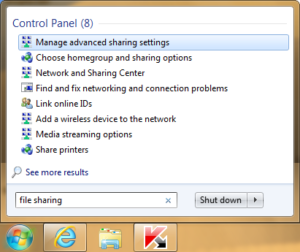 Step 1: Configure File Sharing
Step 1: Configure File Sharing
- Click on Start and then type in “File Sharing” in the search box and select “Manage advanced sharing settings” in the list. (See image on the right for example).
- In the “Advanced Sharing Settings” window, set the settings as follows:
- Network discovery: Turn on
- File and printer sharing: Turn on
- Public folder sharing: Turn on
- Password protected sharing: Turn off
Step 2: Copy Files Into Public Folders The public folders are located in “C:\Users\Public” on your computer. Inside there are public folders for videos, pictures, music, and etc. Copy or move the media files you wish to share into these folders. Warning: Because these are public folders, everyone on your local network will be able to read/write to these folders. Take necessary precautions.
Step 4: Browse Files On Media Player Reboot the player by disconnecting all power from the player and restarting it. Connect the media player to the network and select “Network” from the main menu to browse for available folder shares. Refer to the media player’s user manual for additional details.
(Optional) Step 5: Sharing Other Folders If you wish to share folders other than the “Public” folders, follow these steps:
- Find the folder you wish to share
- Right-click on the folder and choose “Properties”.
- In the “Sharing” tab, click on “Advanced Sharing”.
- Check “Share this folder”, and then click on “Permissions”.
- If “Everyone” is not listed under “Group or user names”, click on “Add” and type in “Everyone” and click “OK”. Make sure “Everyone” has at least “Read” permission checked.
- Click “OK” to accept changes until you get back to the “Sharing” tab.
- Switch to the “Security” tab. If “Everyone” is not listed under “Group or user names”, click on “Edit”, then click “Add”, type in “Everyone” and click “OK”.
- Click “OK” until all windows are closed.
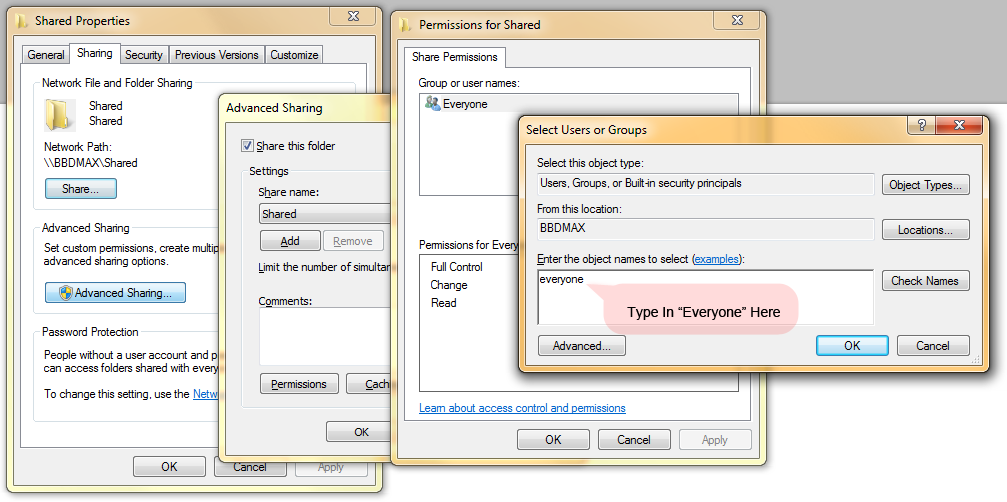
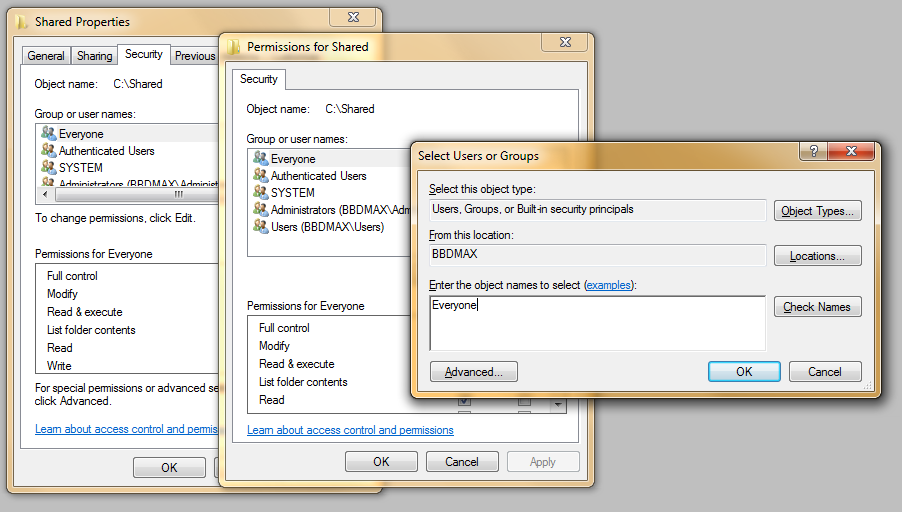
Posted in: Micca 1186-Based Media Players - EP600 G2, EP950, Micca EP100, Micca MPLAY-HD WLAN
Micca MPLAY-HD WLAN Firmware Update Instructions
Please follow the steps below exactly as described to perform a firmware update on the Micca MPLAY-HD WLAN digital media player:
- Download the firmware ZIP file and extract the “install.img” file onto the root directory (i.e. not in any folders) of a USB drive.
- Plug the USB drive into an empty USB HOST jack on the player.
- With the player turned off and power cable disconnected, use a paper clip or toothpick to press and hold the small pinhole firmware update button on the back of the player.
- While pressing the recovery button, connect the power cable to the player. Continue to hold the firmware update button for 5 more seconds, and then release it.
- The recovery mode will begin upgrading the firmware from the USB drive:
- Wait for the player to complete the firmware update. Please be patient as it may take several minutes to complete, during which the screen may be blank or show “no signal”. Do not interrupt the process or power off the player.
- When finished, the player will show the home screen.
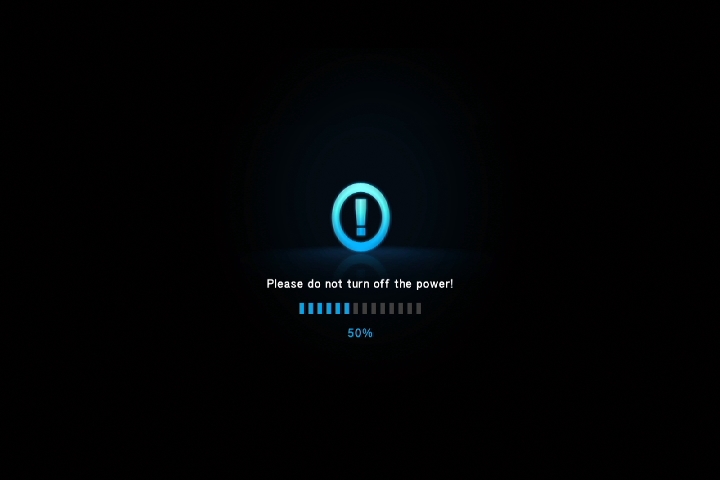
Posted in: Micca MPLAY-HD WLAN
Deleted videos, photos, or music files still show up
If you’ve deleted some media files from a USB drive or SD card, yet the deleted files still show up, the issue is likely caused by the presence of Windows Recycling Bin or MacOS Trash Can folders on the USB drive or SD card. Fixing this issue requires emptying the contents of these folders permanently.
Warning: The purpose of the Windows Recyclin Bin and MacOS Trash Can is to allow you to recover previously deleted files that you later need. The steps below permanently empties these folders so you will not be able to recover these files again. Proceed only if you are certain that you do not need these files.
To empty the Recycling Bin folder created by a Windows PC, plug your USB drive into the PC, wait for the drive to show up in Windows Explorer. Right click on the drive and select “Properties”. In the “General” tab, click on “Disk Cleanup”. Place a check mark for “Recyclin Bin”, and click “OK”. This will delete the contents of the Recycling Bin on the USB drive.
For MacOS, there is unfortunately no built-in way to empty just the Trash Can on a USB drive; all Trash Can folders on all drives are emptied by default. To empty the Trash Can for all drives, plug your USB drive into the Mac, wait for it to mount. Next choose Empty Trash under the Finder menu or press Command+Shift+Delete. A pop up will ask you to confirm that you wish to empty the Trash Can.
Posted in: Digital Media Players, Digital Photo Frames, Micca 1186-Based Media Players - EP600 G2, EP950, Micca EP100, Micca M1003Z, M1203Z, M1503Z, Micca M1709Z, Micca M707Z, M808Z, M1010Z, Micca MPLAY-HD, Micca MPLAY-HD Mini, Micca MPLAY-HD WLAN, Micca Neo Series Photo Frames, Micca Speck
720p/1080p HD Video Encoding Tutorial
Encoding a video in 720p or 1080p high definition format is easier than ever thanks to the availability of free and well working tools like Handbrake. This tutorial will show you how to use this wonderful tool to recode videos into popular MP4 or MKV formats for playback on Micca products that support 720p and 1080p video playback. To start, download and install Handbrake suitable for your operating system from the link below:
https://handbrake.fr/downloads.php
At the time of this tutorial, the Handbrake version is 1.1.2, your screen might look slightly different but should be very similar.
Step 1 – Open the source video
After installing Handbrake, run it and the following window should be displayed. Drag and drop your source video into the Handbrake window to open it.
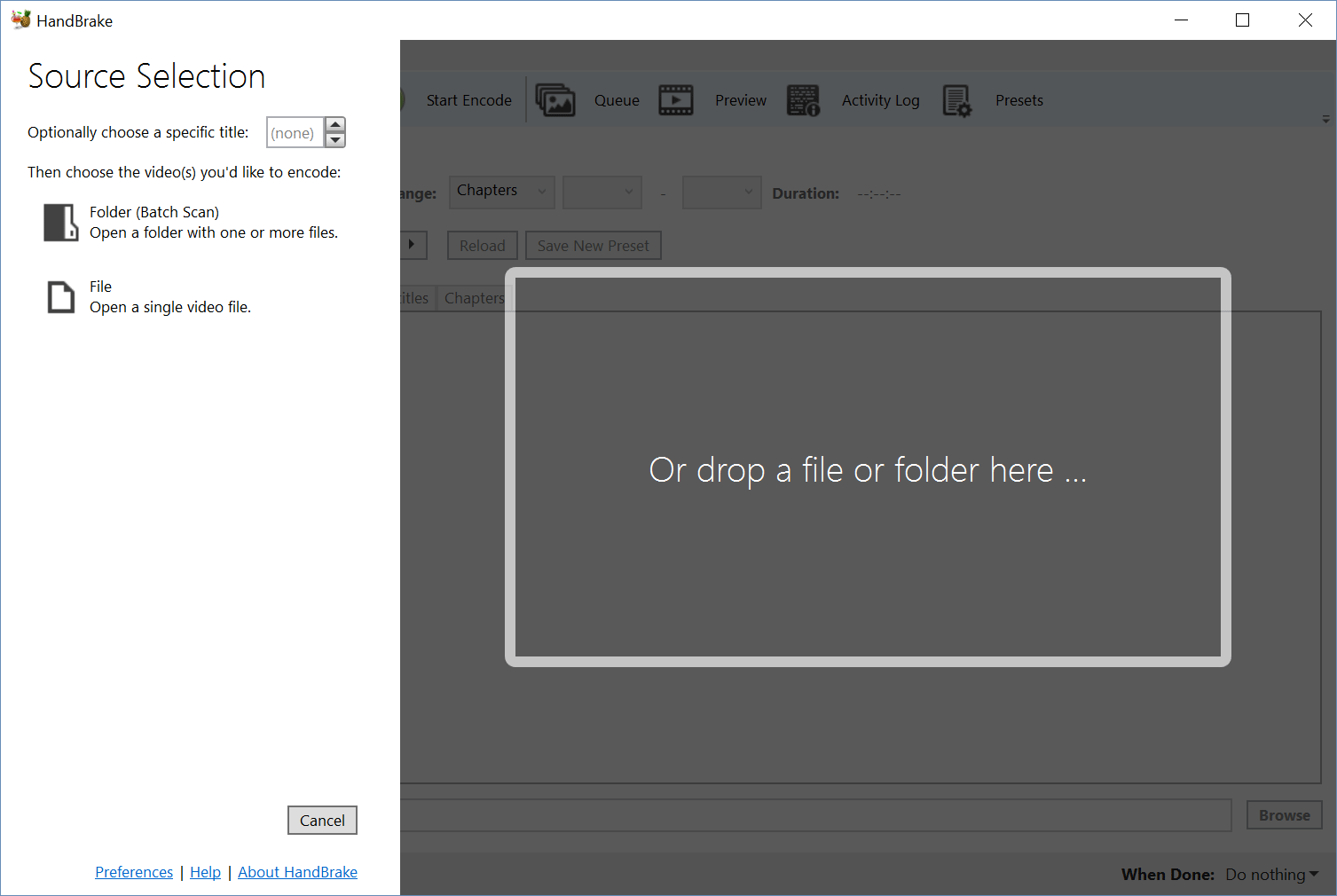
Step 2 – Select a encoding preset Handbrake as numerous convenient presets built-in that are especially useful for our purpose. Choose preset according to the following:
If you want MKV videos (preferred):
If you want MP4 videos:
For this tutorial we are choosing Matroska->H.264 MKV 1080p30 as shown in the image below
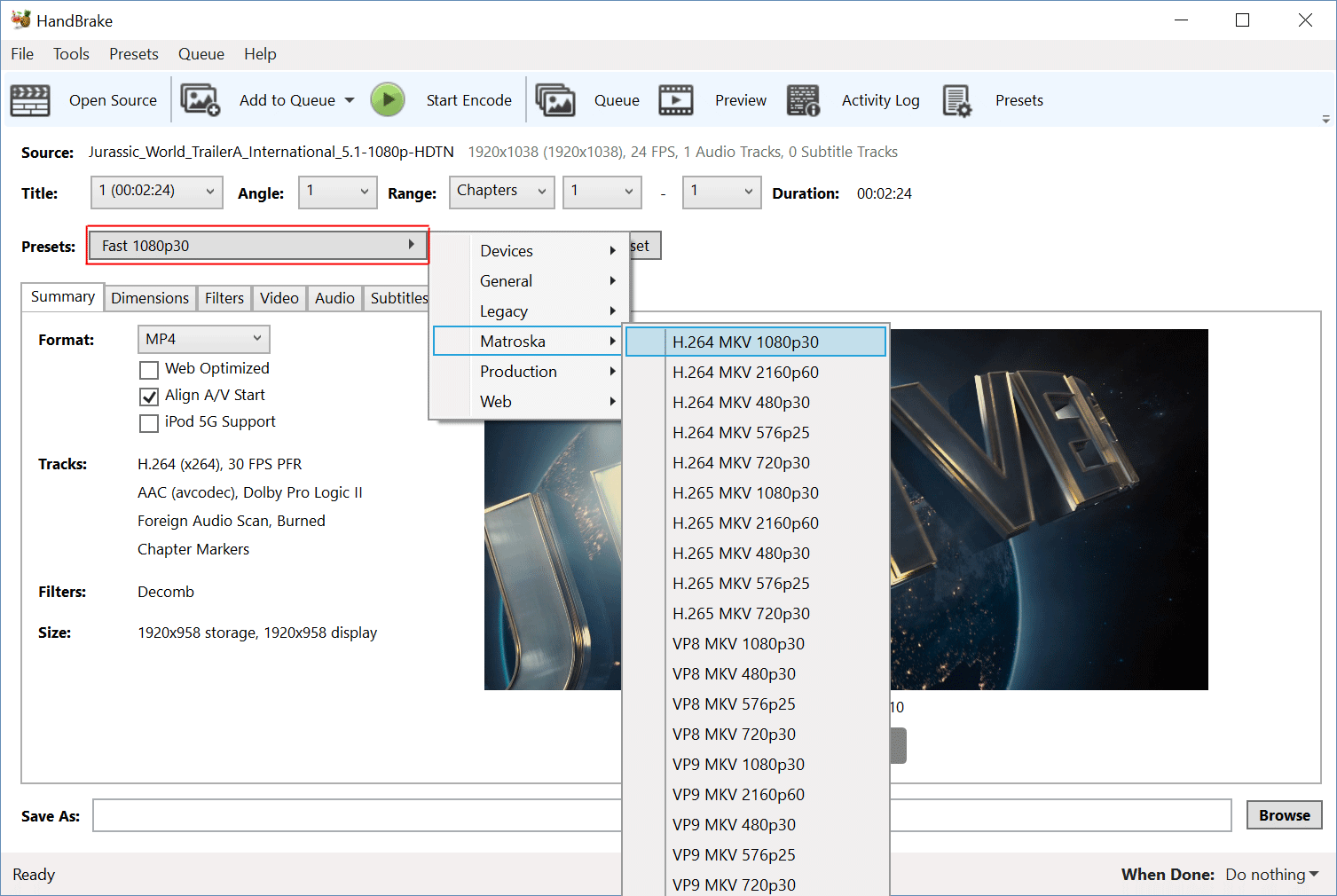
Step 3 – Adjusting Dimensions Click on the Dimensions tab and make the following changes:
The window should look similar to the following:
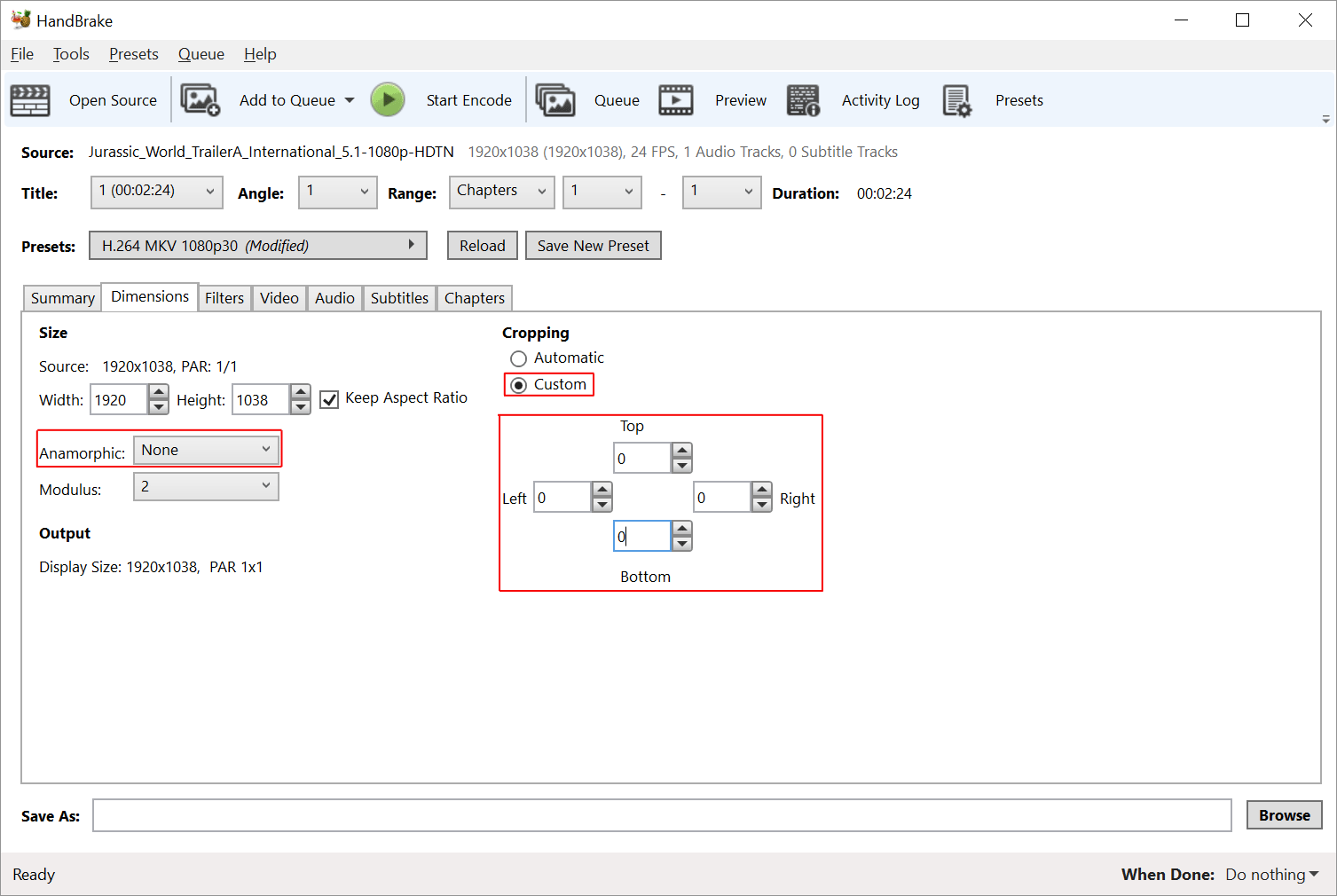
Step 4 – Saving your new video
Almost done! Click on the Browse button and choose a file name and location to save to. Finally, click on the Start Encoding button to begin encoding the new video. After the encoding is done, the new video should play very well on your Micca player.
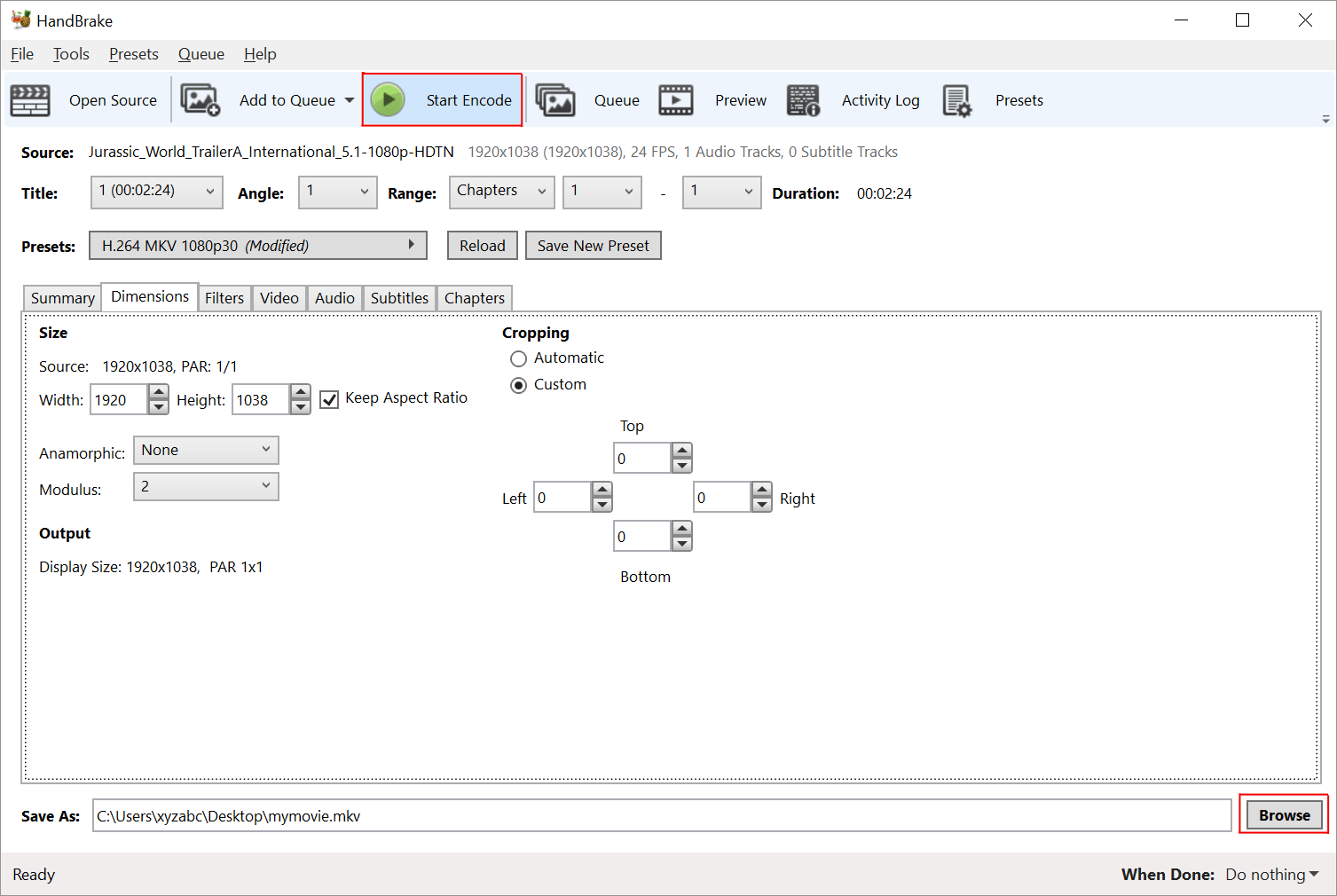
Other Settings Handbrake is a powerful piece of software and there are many other possible settings available that are beyond the scope of this tutorial. Here’s a brief introduction on what the settings in the other tabs do:
Filters: Special video processing filters that can be used to remove noise and artifacts from the video.
Video: Encoding settings for the video track. The Quality setting on this tab can be useful even for novice users. Constant quality is the preferred setting. Make small adjustments to this value and do not change more than 2-3 away from the default value.
Audio: Encoding settings for the audio track, can be useful if you want to include multiple sound tracks or have surround sound tracks.
Subtitle: By default Handbrake does not add any subtitles. You can choose to add in subtitles that exists from the source video, or by importing SRT subtitles.
Chapter: By default Handbrake will retain any chapter marks that were in the original video. You can also import chapter marks from an external source if available.
Posted in: Micca 1186-Based Media Players - EP600 G2, EP950, Micca EP100, Micca MPLAY-HD, Micca MPLAY-HD Mini, Micca MPLAY-HD WLAN, Micca Speck
